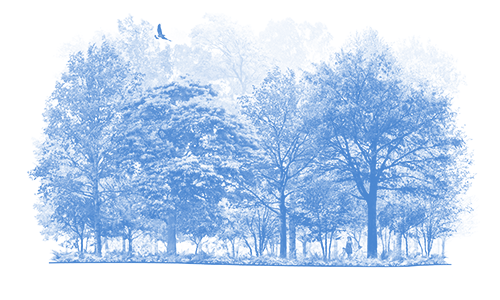








Yellow-billed Cuckoos are slender, long-tailed birds that manage to stay well hidden in deciduous woodlands. They usually sit stock still, even hunching their shoulders to conceal their crisp white underparts, as they hunt for large caterpillars. Bold white spots on the tail’s underside are often the most visible feature on a shaded perch. Fortunately, their drawn-out, knocking call is very distinctive. Yellow-billed Cuckoos are fairly common in the East but have become rare in the West in the last half-century.
Caterpillars top the list of Yellow-Billed Cuckoo prey: individual cuckoos eat thousands of caterpillars per season. On the East coast, periodic outbreaks of tent caterpillars draw cuckoos to the tentlike webs, where they may eat as many as 100 caterpillars at a sitting. Fall webworms and the larvae of gypsy, brown-tailed, and white-marked tussock moths are also part of the cuckoo’s lepidopteran diet, often supplemented with beetles, ants, and spiders. They also take advantage of the annual outbreaks of cicadas, katydids, and crickets, and will hop to the ground to chase frogs and lizards. In summer and fall, cuckoos forage on small wild fruits, including elderberries, blackberries and wild grapes. In winter, fruit and seeds become a larger part of the diet.
The female probably selects the nest site, usually on unsheltered ground, gravel beaches, rocky outcrops, and open forest floors. Nests are typically out in the open, but may also be near logs, boulders, grass clumps, shrubs, or debris. In cities, Common Nighthawks nest on flat gravel roofs.
Common Nighthawks lay eggs directly on the ground, which may consist of gravel, sand, bare rock, wood chips, leaves, needles, slag, tar paper, cinders, or living vegetation, such as moss, dandelion rosettes, and lichens.